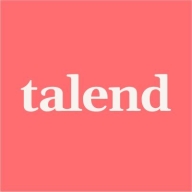

Talend Open Studio and Talend Data Fabric compete in the data management solutions category. Talend Data Fabric has the upper hand with its advanced features suitable for larger enterprises.
Features: Talend Open Studio provides seamless data integration, extensive connectivity, and a user-friendly interface. Talend Data Fabric offers advanced data quality, cloud integration, and governance features.
Room for Improvement: Talend Open Studio could improve with enhanced data governance, more advanced analytics capabilities, and robust support for big data. Talend Data Fabric might benefit from a more straightforward deployment process, reduced initial costs, and increased customization options.
Ease of Deployment and Customer Service: Talend Open Studio allows for quick deployment due to its open-source nature, making it accessible for standard data integration tasks. Talend Data Fabric, although requiring more time and investment for deployment, offers comprehensive customer service and support, beneficial for enterprises.
Pricing and ROI: Talend Open Studio is cost-effective, attracting small to medium-sized businesses seeking ROI without significant investment. Talend Data Fabric, with a higher initial cost, provides extensive functionality and scalable ROI, appealing to companies with long-term data management goals.
| Product | Market Share (%) |
|---|---|
| Talend Open Studio | 3.2% |
| Talend Data Fabric | 0.9% |
| Other | 95.9% |


| Company Size | Count |
|---|---|
| Small Business | 4 |
| Large Enterprise | 3 |
| Company Size | Count |
|---|---|
| Small Business | 22 |
| Midsize Enterprise | 13 |
| Large Enterprise | 18 |
Talend, a leader in cloud data integration and data integrity, enables companies to transform by delivering trusted data at the speed of business.
Talend Data Fabric offers a single suite of apps that shorten the time to trusted data. Users can collect data across systems; govern it to ensure proper use, transform it into new formats and improve quality, and share it with internal and external stakeholders.
Over 3,000 global enterprise customers have chosen Talend to help them turn all their raw data into trusted data to make business decisions with confidence — including GE, HP Inc., and Domino’s.
Talend Open Studio is a free, open source ETL tool for data integration and Big Data. The solution enables you to extract diverse datasets and normalize and transform them into a consistent format which can be loaded into a number of third-party databases and applications.
Talend Open Studio Features
Talend Open Studio has many valuable key features. Some of the most useful ones include:
Talend Open Studio Benefits
There are several benefits to implementing Talend Open Studio. Some of the biggest advantages the solution offers include:
Reviews from Real Users
Below are some reviews and helpful feedback written by PeerSpot users currently using the Talend Open Studio solution.
Elio B., Data Integration Specialist/CTO at Asset messages, says, "The solution has a good balance between automated items and the ability for a developer to integrate and extend what he needs. Other competing tools do not offer the same grade of flexibility when you need to go beyond what is provided by the tool. Talend, on the other hand, allows you to expand very easily."
A Practice Head, Analytics at a tech services company mentions, “The data integration aspect of the solution is excellent. The product's data preparation features are very good. There's very useful data stewardship within the product. From a technical standpoint, the solution itself is pretty good. There are very good pre-built connectors in Talend, which is good for many clients or businesses, as, in most cases, companies are dealing with multiple data sources from multiple technologies. That is where a tool like Talend is extremely helpful.”
Prerna T., Senior System Executive at a tech services company, comments, “The best thing I have found with Talend Open Studio is their major support for the lookups. With Salesforce, when we want to relate our child objects to their parent object, we need to create them via IDs. Then the upsert operation, which will allow you to relate a child object to the event, will have an external ID. That is the best thing which keeps it very sorted. I like that.”
An Implementation Specialist, Individual Contributor at a computer software company, states, “I can connect with different databases such as Oracle Database or SQL Server. It allows you to extract the data from one database to another. I can structure the data by filtering and mapping the fields.” He also adds, “It is very user-friendly. You need to know the basics of SQL development or SQL queries, and you can use this tool.”
PeerSpot user Badrakh V., Information System Architect at Astvision, explains, "The most valuable features are the ETL tools."
We monitor all Data Integration reviews to prevent fraudulent reviews and keep review quality high. We do not post reviews by company employees or direct competitors. We validate each review for authenticity via cross-reference with LinkedIn, and personal follow-up with the reviewer when necessary.